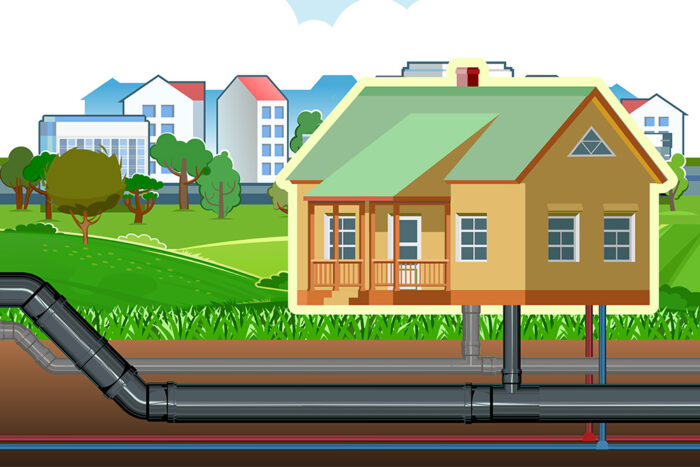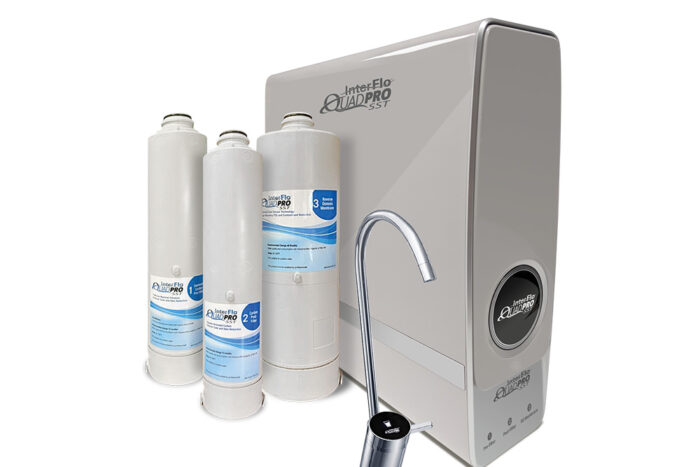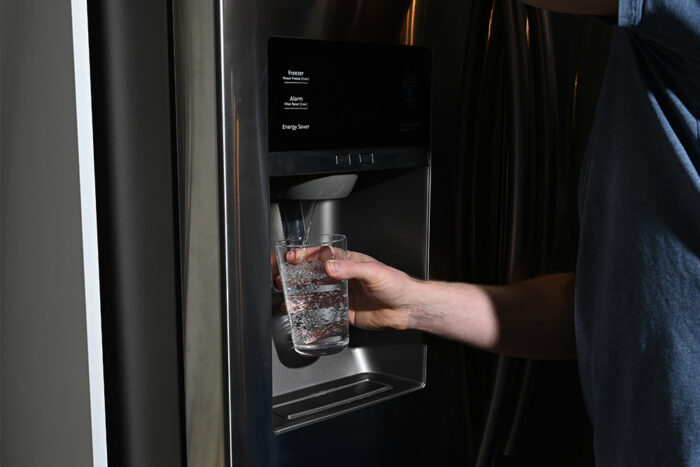Maybe your water at home tastes ok, but you occasionally smell rotten eggs when you turn the faucet on. Whether it’s an unpleasant odor, odd flavor, itchy skin, water spots or soap scum build up, you’ve probably come to the conclusion you need some sort of water treatment equipment.
You’ve heard of water softeners, conditioners, and filters, but what’s the best for your home and what will solve your water issues? It’s helpful to understand water treatment terminology so you can confidently take steps toward improving the taste, smell, and overall quality of your water.
Water Softeners
Water softeners are used to remove hardness in water. The more hardness in water, the more likely your home could benefit from this water treatment equipment. Specifically, a water softener reduces calcium, magnesium, and small amounts of iron by exchanging them with low levels of sodium. The result? Soft water that prevents mineral build up in your home’s water pipes, helps soap and other cleaning products be more effective, protects the life of your appliances, and other effects of hard water.
Because certain minerals are removed during the water softening process, water treated with a softener may even taste slightly different than hard water. Nonetheless, the overall quality of your water will be significantly improved with a water softening system.
Water Conditioners
Water conditioner is a widely used term in the industry and each company defines these systems differently. Water-Right water conditioners, using our exclusive Crystal Right™ media, are truly multi-tasking machines that can soften, filter iron and manganese, and raise the pH of acidic water, if needed, providing far more benefits than a softener alone.
But not all water conditioners are created equally. In fact, you may encounter some water treatment manufacturers and companies referring to their salt-free or saltless “descaling” systems as water conditioners as well. These systems don’t actually remove hard minerals in water, so your home doesn’t actually have true soft water. A salt-free descaling system leaves the minerals in your water but changes their state, so they are less likely to stick to your plumbing, fixtures, and appliances. They are not able to treat the other common well water issues like iron or the low pH of acidic water like a Crystal-Right water conditioner can.
If you’re considering a water conditioner for your home, it’s important to know exactly what that particular system is capable of treating.
Water Filters
A water filter is typically used to remove specific impurities from your water. For example, if you have reddish brown staining in your toilets, your water may have high levels of iron in it. A water filtration system will oxidize the iron, changing it into a particle so that it can easily be removed by the filtration media inside. Using carbon or charcoal in the filtering process, will trap contaminants like chlorine and sulfur so they can’t pass through, improving the taste and odor of your water.
Water filters can also neutralize acidic water and reduce nuisance particles, but they don’t remove hardness like softeners and conditioners do. If water hardness is not an issue in your home, a water filter will remove the other nuisance contaminants you might face.
Reverse Osmosis
Reverse Osmosis (RO) is a more advanced water filtration process that uses multiple carbon filters in conjunction with a semi-permeable membrane. This membrane has extremely tiny pores that help remove microscopic contaminants from the water you drink by straining them out. In fact, ROs can tackle some of the more serious contaminants like lead, arsenic, fluoride, nitrates, and VOCs.
You’ll definitely notice an improvement in taste and smell when drinking purified RO water. The equipment doesn’t take up a lot of space and can be installed under the sink to provide clean drinking water right at your faucet. They can also come in a commercial sized system to be installed in the basement and can provide purified water throughout your entire house.
UV Water Treatment
UV water treatment is designed to remove microbiological contamination like Cryptosporidium, Giardia, E. Coli and viruses not visible to the naked eye. It does not remove chemicals or improve the taste or color of your water. However, many of the contaminants it does remove cannot be addressed with softeners, conditioners, or filters. If you’ve had your water tested and have confirmed microbiological contamination, this treatment method will remove it.
With UV treatment, water is sent through a steel chamber where it is exposed to UV light that disables bacteria and viruses by attacking and disrupting their DNA. In this process, nothing is added to the water. The light, usually plumbed on the main water line of a home, simply kills bacteria as they pass through the light. Pre-filtration helps this treatment work more effectively, and some units include that function as part of the system.
If you don’t have proven microbiological contamination but want to be covered just in case, pairing Ultraviolet (UV) treatment with a water softener or RO system can act as a kind of total water care insurance. With these units, you’ll be protected against a wide range of water issues if and when they become present.
Testing is the First Step to Better Tasting Water
To recap, here is a quick reference to understand the capabilities of each system. Selecting and installing the right equipment is crucial in solving problem water so it’s important to seek the expertise of an experienced professional.

They will start by testing your water to uncover the science behind the issues. From here, a knowledgeable expert can make an informed recommendation that may involve one or more of the above solutions to tackle even the toughest water challenges.
Complete the form below and we’ll connect you with a certified Water-Right professional in your area. All Water-Right dealers are equipped to help you with your problem water needs.
Find the right contractor for you.
Recent Homeowner Resources

Are You Drinking Contaminated Water? New Rules Help Homeowners Identify Lead Risks

Introducing InterFlo® QuadPro SST!



